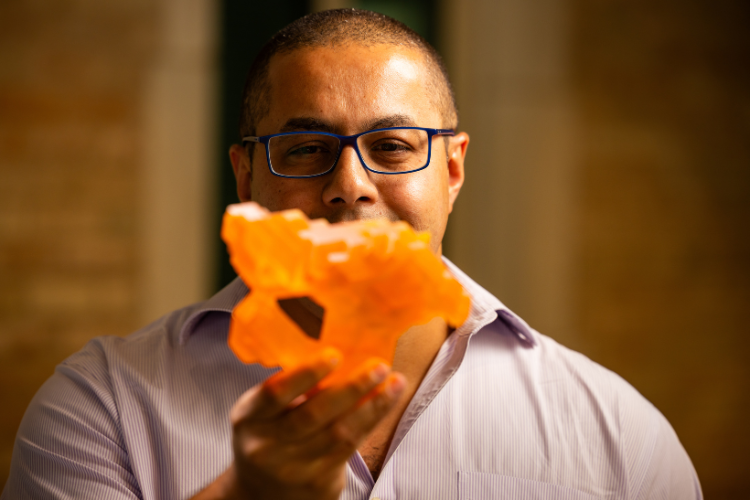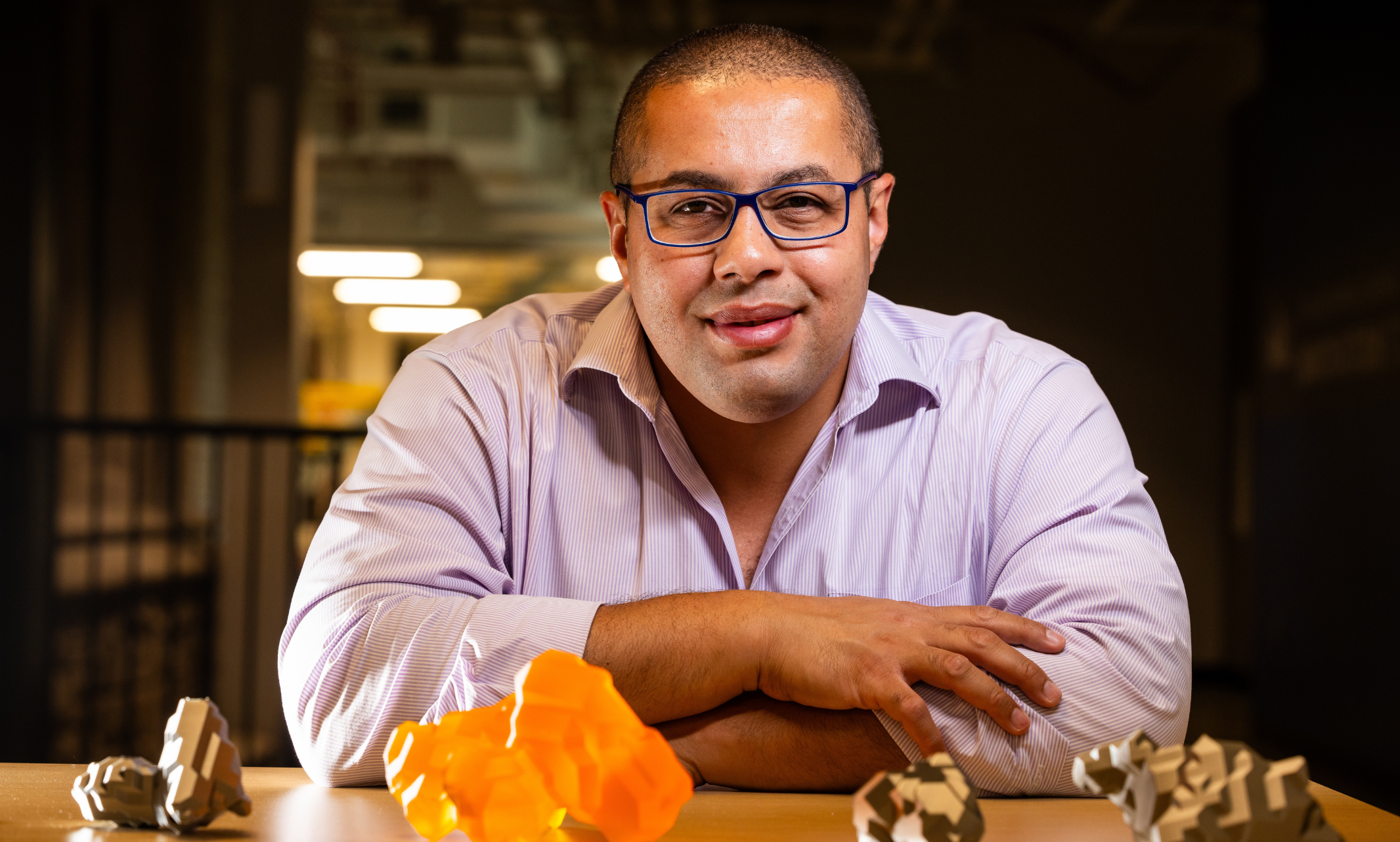Ahmed Hassan, Ph.D., associate professor of computing and engineering, is working with partners at the National Institute of Standards and Technology, the U.S. Air Force Research Laboratory and the Space Science Institute to gain a more thorough understanding of the composition and properties of lunar dust. Hassan is crafting three-dimensional models of the shapes of individual, microscopic dust particles.
Why? Lunar dust is literally unearthly. It has unique geotechnical properties due to the absence of geological processes on the moon, such as chemical weathering, humidity and atmospheric wind. And the moon’s magnetospheric interactions and constant collisions with comets and asteroids also create discrepancies.
As a result, the shape of microscopic particles in the moon’s regolith, or lunar dust, differs from the shape of particles in earthly materials that resemble it at the macro level; for example, they have sharper, jagged edges. And those different shapes have to be accounted for.
During the Apollo missions, lunar particles caused significant problems such as abrasion of vehicles, spacecraft and scientific equipment as well as obscuring the solar panels that generated electricity. During a lunar landing, the rocket engine sends dust particles flying “like tiny bullets,” Hassan said.
Lunar dust adhering to spacesuits even caused allergy-like symptoms for the astronauts when it penetrated the atmosphere inside the spacecraft when they returned from moonwalks.
“Depending on the application, lunar regolith (dust) particles can cause serious problems or be used as a valuable resource in future lunar expeditions,” Hassan said. “The research results can help guide a wide range of lunar applications, from electrostatic dust removal from solar panels to using it to fabricate structures on the moon.”

Yes, to build structures. Among the applications of Hassan’s research is the feasibility of using lunar dust to make concrete on the moon, a critically important factor for building permanent settlements.
In his initial study, Hassan and his team were able to model 25 distinct particle shapes from a tiny sample of lunar dust brought back from the moon missions of the 1970s. For his current study, he has access to approximately 10,000 particles.
To prepare for future missions, space scientists created various reproductions of lunar dust, called simulants, crafted from materials on the earth. Recent advances in 3D X-Ray capabilities, however, revealed a problem.
“Some of the simulants matched the physical properties of lunar regolith; some matched the chemical properties. But no one had tried to match particle shapes,” Hassan said.
X-ray nanocomputed tomography (XCT) allowed scientists to examine the shape of particles as small as 400 nanometers (billionths of a meter) in length. That revealed the sharp, jagged edges and other unique properties that the next generation of simulants will have to match.
Future astronauts will be better prepared to deal with the moon’s unique environment, thanks to Hassan’s efforts.

